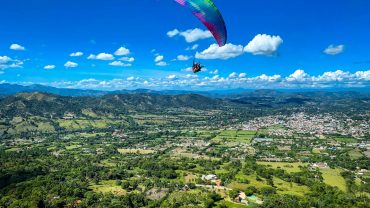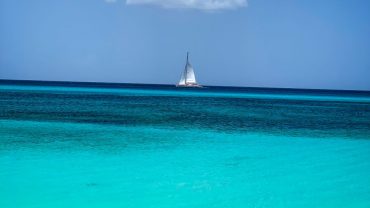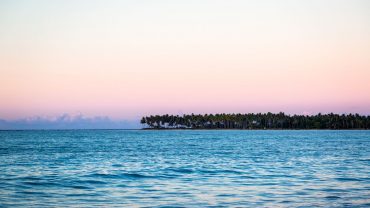Tucked in the southwestern most corner of the Dominican Republic, bordering Haiti, the Pedernales province is as remote as it gets. Yet this distant, desert-like coastal landscape beckons the ultimate outdoor explorer–a place where giant cacti line the roads with intermittent views of iridescent turquoise shores, where cows and iguanas are a frequent sight, and where naturalists will find the country’s most significant reserves.
AMAZING NATUAL ATTRACTIONS
BAHÍA DE LAS ÁGUILAS
Recognized as the most beautiful beach in the DR and part of the Jaragua National Park, this diamond-white stretch runs a whopping five miles, boasting crystal clear turquoise waters, and a spectacular rocky karst landscape hugs this beach all along the coastline.
CABO ROJO
Cabo Rojo remains one of the DR’s most popular beaches, winning visitors over with its captivating coastal views. Its turquoise waters are also home to some of the Caribbean Sea’s best-preserved coral reefs, providing a breeding ground for Antillean Manatees and the juvenile hawksbills.
HAITIAN MARKET
A wide-open field fills with open air stalls, where Haitian vendors sell products ranging from vegetables to secondhand clothing and electronics. It’s one big flea market!
HOYO DE PELEMPITO
Located a cool 1,300 meters (4,265 feet) high–the drive is an attraction in itself, and unique to the Caribbean region. At the top are several mountain trails near the observatory, which overlooks the geological depression dropping 700 meters (2,300 feet), nestled between the Sierra de Bahoruco mountains.
JARAGUA NATIONAL PARK
Jaragua National Park is one of DR’s most significant natural reserves; part of the first UNESCO Biosphere Reserve in the DR, the park encompass diverse ecosystems–from sea to land, lagoon to isles, and a rich and diverse wildlife.
LAGOENRIQUILLO
Lago Enriquillo is the largest and deepest lake below sea level in the Caribbean, ideal for wildlife watching and nature exploration. Boat trips along the lake’s waters and onto Isla Cabritos reveal a large population of American crocodiles, and flamingos.
LAGUNA DE OVIEDO
The largest lagoon in DR, with a salt-water level three times higher than that of the sea, Laguna de Oviedo is a prime bird watching area. Around the lagoon’s thick mangrove swamps and 24 keys you’ll spot royal and blue herons, the great egret, roseate spoonbills, sandpipers, and flamingos.
PARQUE EÓLICO LOS COCOS
The largest wind farm in the Caribbean and Central America, Parque Eólico Los Cocos is also the first in the DR; rising to the height of a 40-floor building, it’s almost impossible to grasp just how big these wind turbines are until you’re driving up close.
PASEO DE LOS FLAMENCOS
Hike the shores of Laguna de Oviedo along the Paseo de los Flamencos for a close look at the lovely pink creatures from land; the hour-long walk takes you along the lake’s thick mangrove swamps, exploring flora.
PEDERNALES DINING
Pedernales is the country’s largest source of spiny lobsters. The better-known restaurants in Pedernales, such as King Crab, Jalicar and Perla Negra, will prepare them grilled or to the recipe of your choice. While there are no restaurants in Bahía de las Aguilas, tourists can go early and then return for lunch at Cabo.
SCUBA DIVING IN PEDERNALES
Pedernales ranks among the DR’s premier diving destinations, boasting unique rock formations, some of the best-preserved coral reefs in DR, and the largest number of baby hawksbill turtles in the Caribbean. Explore sites ranging from four to 30 meters (13-98 feet).
TROU NICOLÁS
Part of the Jaragua National Park, a series of three river fed natural pools tucked in a partially open cave and hugged by rocky formations.





Comment (0)